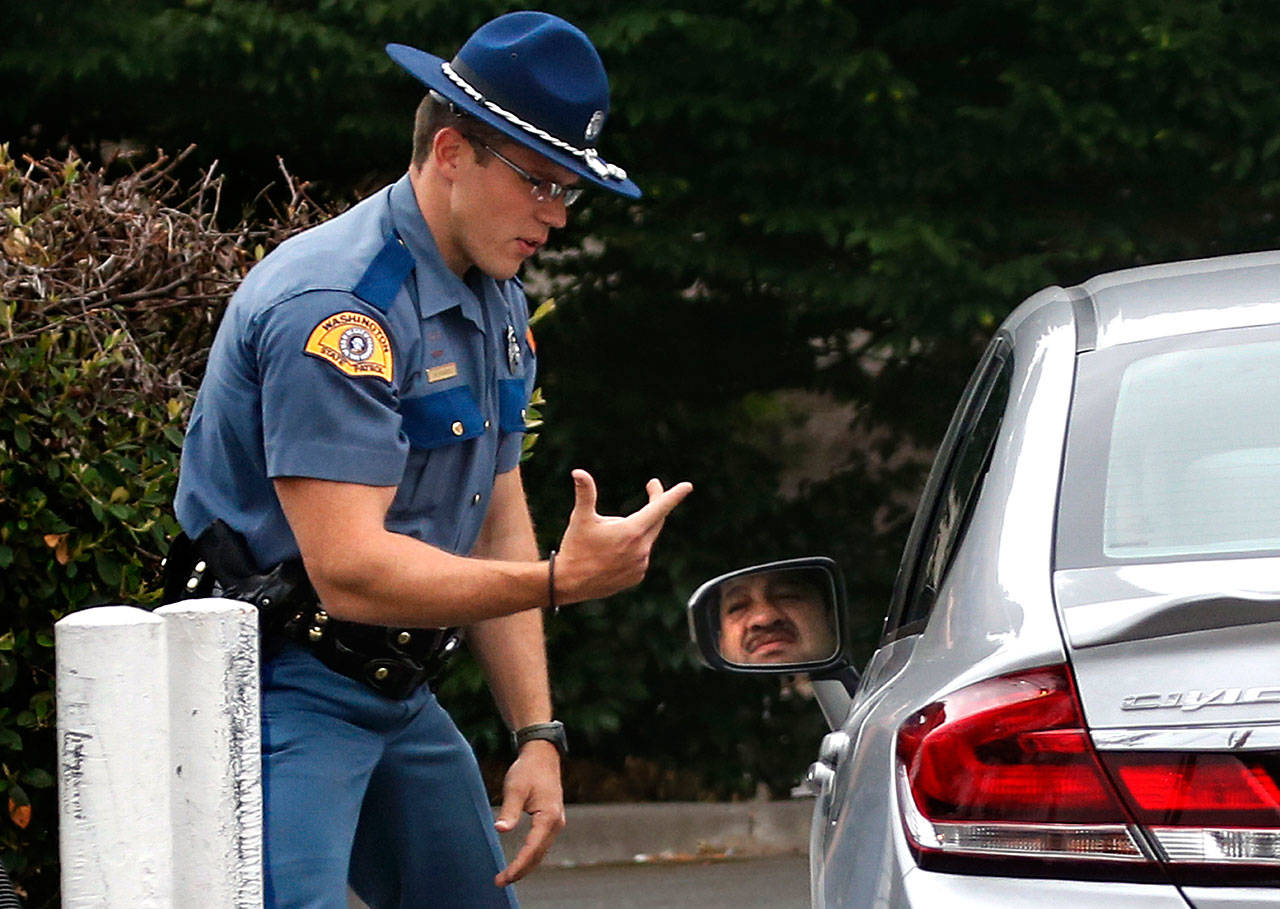By The Herald Editorial Board
The grace period is over: Don’t pick up the phone, drivers.
Washington state’s new distracted driving law, also referred to as “electronics DUI,” went into effect in late July, but a six-month grace period has expired and drivers can expect to receive a $136 ticket for a first offense if police, deputies or troopers pull them over for holding their smartphones or other electronic devices for texting; browsing; taking photos; watching videos; reading and sending emails or using other apps.
As written, the law originally would not have gone into effect until 2019, but that portion of the law was wisely vetoed by Gov. Jay Inslee, who asked law enforcement to provide a six-month period where drivers would be warned but not cited, giving drivers adequate time to prepare for the change.
Time’s up.
Those wondering what they can or can’t do with their phones while driving can consult a YouTube video prepared last year by the Washington State Patrol and the state Traffic Commission at tinyurl.com/WSPphonelaw that details the law’s main requirements. But among things drivers should remember:
After the first $136 ticket, drivers stopped for a second offense within the next five years can be fined $234.
The infractions become part of a driver’s record and are available to insurance companies as they set rates.
Drivers can still be cited for holding and using their phone while stopped at an intersection or in traffic. Even when stopped for a light, your attention has to be on the road around you, for example, watching for that pedestrian crossing the street with his head down and eyes fixed on his phone.
And while it’s still legal to eat, drink or smoke while driving, those and other distractions that contribute to another driving infraction or accident can result in a citation for “dangerously distracted” driving, a $99 fine.
There are exceptions. Holding the phone while dialing 911 to report an emergency is allowed, as is the use of citizen’s band radio. And drivers can use phones hands-free and are allowed a touch or swipe to answer a call on dash-mounted phones.
Using a phone hands-free doesn’t eliminate distractions and can still divert a driver’s attention from the road, causing “inattention blindness.” But manipulating a phone increases the danger. A study by the state’s Traffic Safety Commission found that texting can raise a driver’s risk of causing an accident 23 times over.
Changes in law and public information campaigns may be having an effect in curbing phone use and other distractions, though there’s a lag in data to show recent effectiveness.
In Washington state, figures from the Washington Traffic Safety Commission show a 32 percent increase in traffic fatalities caused by distracted driving from 130 deaths in 2014 to 171 in 2015. Overall, traffic deaths from all causes, which had reached a record low in recent decades of 436 in 2014, rose sharply in 2015 to 551.
The National Highway Traffic Safety Administration, in its most recent report last year, noted that while total fatalities and the rate of fatalities per million miles driven has increased between 2015 and 2016, deaths in accidents resulting from distracted driving decreased 2.2 percent, while deaths increased 4.6 percent in accidents involving unrestrained passengers, 4 percent from speed-related wrecks and 1.7 percent from driving while intoxicated.
The NHTSA figures showed that Washington state’s traffic fatalities, following that rise between 2014 and 2015, declined by 2.5 percent in 2016.
But the statistic that matters most is the likelihood that a driver will arrive safety at her or his destination, a likelihood that increases when we’re not distracted and our attention is on the road.
Talk to us
> Give us your news tips.
> Send us a letter to the editor.
> More Herald contact information.

























